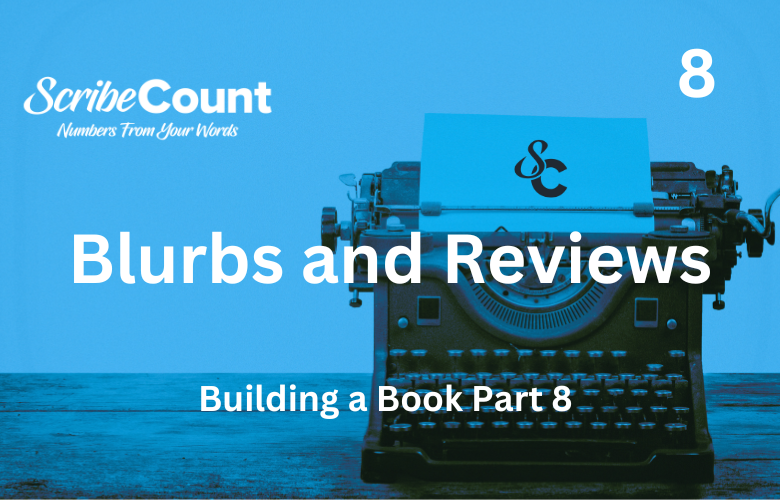The Power of Blurbs and Book Reviews: Essential Elements for Indie Authors
Crafting a Compelling Blurb
1. Understanding the Blurb’s Function
A book blurb is a concise and persuasive description designed to hook potential readers and encourage them to buy the book. It serves as an advertisement, offering a glimpse into the book’s content and tone while sparking curiosity.
2. Where to Place the Blurb on a Book Cover
Blurbs are commonly found in several locations:
Back Cover: The most traditional and widely used placement, particularly for print books.
Inside Flap (Hardcovers with Dust Jackets): A prime spot for an extended blurb.
Online Retail Pages: E-book and print listings on platforms like Amazon and IngramSpark.
Front Cover (Limited Use): Short taglines or phrases that enhance appeal, especially in genre fiction.
3. Optimal Blurb Size Per Format
Paperback & Hardcover (Back Cover): 100-200 words, structured in 2-3 paragraphs.
E-books (Retail Page Descriptions): 150-300 words, allowing for more depth.
Audiobook Descriptions: 100-250 words, tailored for an audio-friendly audience.
4. Crafting an Effective Blurb
Start with a Hook: The first sentence should instantly engage the reader.
Introduce the Conflict or Core Concept: Give a brief, compelling summary of the main tension or theme.
End with a Tease: Leave the reader wanting more without giving away key plot points.
Maintain Genre Awareness: A romance blurb should evoke emotion, while a thriller’s should promise tension and excitement.
Keep It Concise: Avoid overly complex language; readability is crucial.
5. The Goal of a Blurb
The ultimate purpose of a blurb is to entice potential readers into purchasing the book. It should evoke curiosity, communicate the book’s core appeal, and create an emotional response that leads to action.
Leveraging Book Reviews for Maximum Impact
1. The Role of Book Reviews
Book reviews serve as social proof, building trust with readers by demonstrating that others have found value in the book. They can influence buying decisions, boost credibility, and enhance discoverability in online marketplaces.
2. Where to Place Reviews on a Book Cover
Back Cover (Print Books): Short, impactful quotes from notable reviewers or endorsements.
Front Cover (Select Cases): Starred reviews or accolades, particularly for award-winning books.
Inside Pages: A dedicated praise section before the title page.
Retail Pages (Online Listings): Star ratings and reader reviews on platforms like Amazon and Goodreads.
3. Optimal Review Size Per Format
Back Cover: One or two quotes, each under 20 words.
Front Cover: A brief, high-impact phrase (e.g., “A masterpiece!” – NYT Bestseller).
Online Listings: Multiple reviews, often featuring longer excerpts.
4. Star Ratings and Their Impact
Star ratings are a critical part of the review process and serve as an immediate visual indicator of a book’s quality. They appear prominently on online retail sites such as Amazon, Goodreads, and Barnes & Noble.
5-Star Ratings: The gold standard, indicating a highly recommended book.
4-Star Ratings: Positive, showing some room for improvement but still recommended.
3-Star Ratings: Neutral or mixed feedback, often balanced with pros and cons.
2- and 1-Star Ratings: Typically negative, which can still provide constructive criticism for future improvements.
5. Selecting and Showcasing Effective Reviews
Choose Credible Sources: Reviews from established authors, media outlets, or influencers carry more weight.
Highlight Key Praise: Pick reviews that emphasize uniqueness, storytelling, or emotional impact.
Use Bold and Italic Styling: To draw attention to standout phrases in printed and digital formats.
6. Copyright and Ownership of Reviews
Reviews, whether professional or from everyday readers, raise questions about copyright ownership:
Who Owns the Review? In most cases, the reviewer owns their content. If the review is posted on a platform like Amazon or Goodreads, the platform’s terms of service dictate how it can be used.
Permission to Use Reviews: Indie authors should seek permission before using a reader’s review in marketing materials unless it falls under fair use (e.g., quoting a short excerpt for commentary).
Publisher-Controlled Reviews: If a publisher commissions a review (e.g., through Kirkus or Publishers Weekly), the author may have specific rights to use it, depending on the agreement.
7. The Purpose of Book Reviews
Book reviews act as a form of endorsement, reassuring hesitant buyers and reinforcing the book’s quality. They enhance visibility, drive sales, and contribute to long-term success.
By understanding how to craft and strategically place blurbs and book reviews, indie authors can significantly enhance their book’s marketability and reader appeal.

